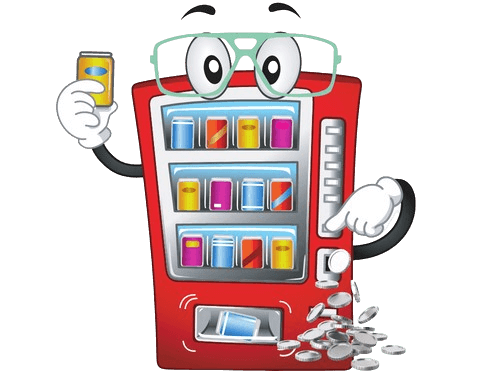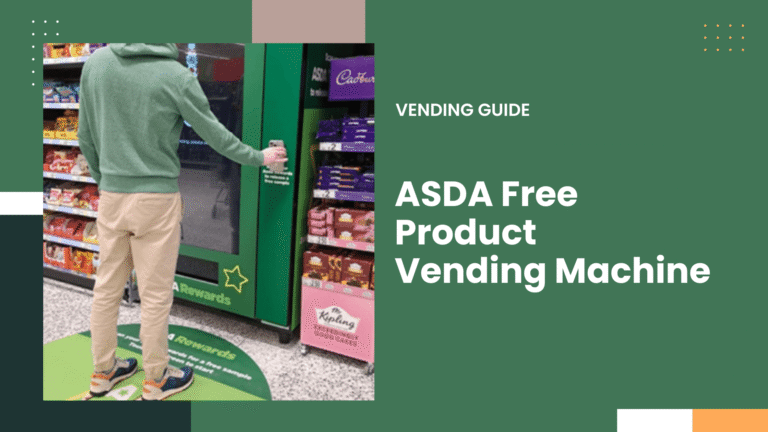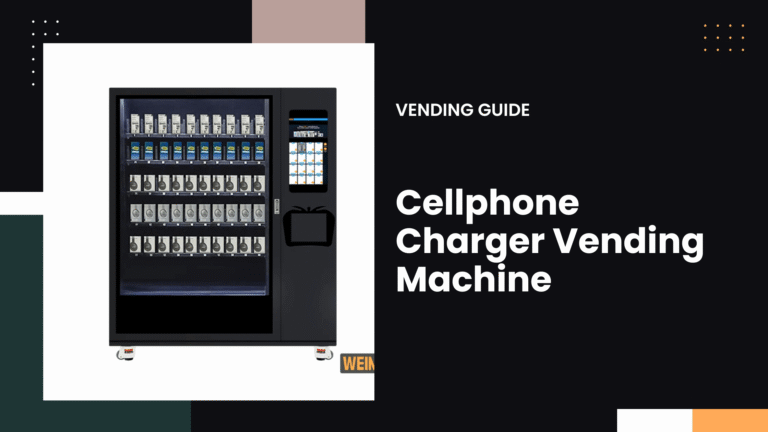How Much is a Snack Vending Machine? Costs, Models, and ROI
A snack vending machine in the U.S. typically costs $3,000–$5,000 new or $1,000–$3,000 used. Premium models with card readers and large capacity can exceed $6,000, while older or refurbished machines may sell for as little as $200–$1,500, depending on condition and features.
You see, Snack vending machines come in every shape, size, and price point.
Whether you’re buying new or used, the goal is simple: just find a reliable machine that fits your budget and delivers steady returns.
Cost Breakdown: New vs. Used Machines
- New snack vending machines in the U.S. generally start around $2,000–$3,500 for basic snack-only models.
- Used or refurbished units can cost as little as $1,000, depending on condition and features.
If you want a combo setup that dispenses both snacks and drinks, expect to spend around $5,000–$7,500 for new models.
Let’s say, if you want to add features like cashless payments, touchscreens, or remote telemetry, it will add another $100–$300 to the initial cost.
Reputable suppliers such as A&M Equipment Sales typically list used machines between $1,500 and $3,000, while new models from brands like Seaga, AMS, APi, and Crane usually fall in the $3,000–$7,000 range.
Payment Systems
Most modern machines are built to handle cash, coins, and card or mobile payments.
Basic versions come with coin and bill acceptors by default, while add-on readers from Nayax, Greenlite, or USA Technologies enable credit/debit and NFC payments like Apple Pay or Google Pay.
These modules cost around $100–$300, and many newer machines now bundle them as standard features.
Key Features and Technology
Touchscreen Displays
Models like the Crane Merchant series and eVending Elite series use bright color touchscreens (3.5″–10″) that let customers browse, view nutrition info, and even add multiple items before paying.
Crane’s touchscreen models feature a shopping cart system and promote related items, while the Elite Snack 5W/6W units come with Braille keypads and ADA-compliant layouts.
Remote Inventory Monitoring
Many new machines include wireless telemetry for tracking inventory and machine performance. This allows operators to check stock levels, errors, and sales data in real time, cutting restock trips by about 20% on average.
Systems like Nayax and Cantaloupe are commonly used for this purpose.
Combo (Snack + Drink) Models
Machines such as the Seaga Envision 5C and AMS Multitasker/EZ3 are designed to handle both snacks and cold drinks.
Combo units cost more, roughly $5,000–$7,000 new, but they save space and can stock 500–600 items total, split across snacks and beverages.
ADA Compliance
Every vending location needs at least one ADA-compliant machine. This means controls, payment slots, and delivery bins are all placed between 15″ and 48″ from the floor.
Machines like the eVending Elite series come fully compliant out of the box with Braille keypads and low-reach controls.
Recommended Snack Vending Machine Models
| Model | Type | New Price | Capacity |
|---|---|---|---|
| Seaga Envision ENV5S | Snack | $4,500–5,000 | ~550 items |
| Seaga Envision ENV5C | Snack + Drink Combo | $6,000–6,500 | ~360 snacks/drinks |
| Automatic Products 113 | Snack | $3,000–3,500 | ~200–300 items |
| AMS Classic Snack | Snack | $4,000–6,000 | ~300–400 items |
| Crane Merchant 4 Media Ambient | Snack (Touchscreen) | $6,000–6,500 | 28 selections |
| eVending Elite Series 6W | Snack (ADA-Compliant) | ~$7,000 | ~630 snacks |
For outdoor environments or vandal-prone areas, specialized units like AMS Vandal-Resistant or MarketOne 5W offer weatherproof housings and reinforced locks.
Most outdoor models are drink-only or combo due to heat sensitivity.
Snack Vending Profitability and ROI
Snack vending can generate consistent cash flow when placed in the right location.
Gross margins on snacks often exceed 50%. For instance, buying a bag of chips for $0.50 and selling it for $1.00 yields $0.50 profit before costs. After commissions and maintenance, operators typically net around 30–40% of total sales.
One real-world example:
A single office vending machine generating $1,200 in monthly sales with 40% product costs ($480) and a 20% location commission ($240) leaves $480 in monthly profit.
Operating expenses include:
- Product restocks: 30–50% of sales ($200–$500/month)
- Maintenance and minor repairs: $50–$200/month
- Electricity: $10–$50/month
- Commissions or rent: 10–25% of revenue
- Labor: 1–3 hours weekly per machine for refilling and upkeep
Smart operators use telemetry to reduce service trips and improve efficiency.
ROI and Payback Period
A new snack vending machine costing $3,000–$5,000 usually pays for itself in 12–24 months, depending on traffic and pricing.
Let’s break that down:
- High-traffic sites (e.g., airports, malls): $800–$1,000+ monthly profit → payback in under a year.
- Average sites (e.g., schools, gyms): $400–$600 profit/month → payback in 12–18 months.
- Low-traffic sites: $150–$300 profit/month → payback in 2+ years.
On average, most operators see $200–$800 profit per month per machine. The key factor is location — a premium machine in a poor spot won’t perform nearly as well as a basic one in a busy area.
Final Take
If you’re planning to expand or start a vending route, snack machines remain one of the most stable options. They have steady demand, broad placement potential, and a balanced entry cost.
Focus on three things:
- Buy from reputable vendors — it saves you in long-term maintenance.
- Choose high-traffic locations where people linger (offices, schools, transit hubs).
- Use cashless and telemetry features to cut downtime and boost convenience.
When managed properly, snack vending machines can deliver consistent 30–40% net margins and become cash-flow positive in under two years.






